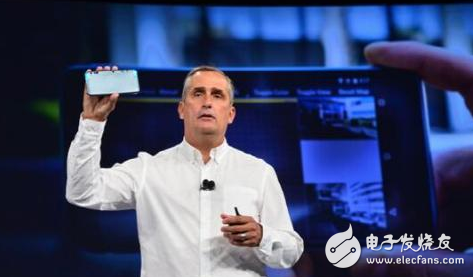According to the Computerworld website, Intel Reality 3D camera technology is a star at the Intel Developer Forum held in San Francisco last year. In addition to using real-life cameras to "see" the world's robots and drones, CEO Brian Krzanich also demonstrated the first smartphone prototype with integrated real-world 3D camera technology.
The first real-life smartphone was launched in January this year at a price of $399 (approximately RMB 2,654), which includes a software toolkit that enables developers to develop augmented reality applications using real-life cameras and the Google Project Tango platform. This smartphone makes Intel stand on the cutting edge of mobile augmented reality. Affected by Pokémon Go, mobile augmented reality technology is currently receiving widespread attention.
Real-life smartphones have a very short life span. Intel has quietly stopped selling the phone, which is in line with its decision to reduce Atom processor development activities and basically abandon the smartphone market. Real-life cameras are still alive and perform well in other devices, but Intel's ambition to conquer mobile enhancement/virtual reality will manifest itself in other forms.
Real-life smartphones have never been considered for sale to the public. It is a reference device designed to help developers and device manufacturers discover new uses for 3D cameras in mobile phones. But it may help Intel play a more important role in the emerging market for enhanced/virtual reality devices.

Computerworld said this is undoubtedly a setback for Google because developers have lost a hardware platform that can be used to test and develop Project Tango applications. Google launched a tablet development kit for $512 (about RMB 3,405), but did not launch a smartphone development kit.
Lenovo Phab 2 Pro is the first commercial Project Tango smartphone to be available for sale at $499 later this year. The Phab 2 Pro features a 6.4-inch display, and the sensor allows it to measure short distances and navigate indoors. It also plays 3D games, in which virtual images are overlaid into the real world.
Intel Reality Smartphone is for developers, with a resolution of 2560 x 1440 pixels, but its real appeal lies in the real-life ZR300 system. Similar to Microsoft Kinect, the Real ZR300 system can use its cameras and sensors to create 3D maps of the surrounding environment, detect user gestures and identify objects.
The Reality System is also used in many other products and is at the heart of Intel's strategy to use computer vision technology to enhance the interaction of PCs and other devices.
Intel plans to host the Intel Developer Forum in San Francisco next month, when it may elaborate on its augmented reality and virtual reality strategy. While reducing the development of Atom chips, Intel will elaborate on a plan for augmented reality smart glasses for remote collaboration. This smart glasses uses another low-power chipset.
According to Computerworld, Intel's best assets in augmented reality and virtual reality are PC processors that provide processing power for virtual reality helmets such as Oculus Rift and HTC Vive. However, Intel does not have graphics cards that provide graphics capabilities for them. These cards are produced by NVIDIA and AMD.
Intel did not join Google's DayDream project, a virtual reality platform that combines hardware and software, based on Android N. Hewlett-Packard has said that it will provide virtual reality for Chromebooks, and most Chromebooks are equipped with Intel chips.
Single Ended Shear Beam Load Cell
Weighing sensor a kind of force sensor used on weighing apparatus. The principle of resistance strain type weighing sensor, which can convert the gravity acting on the measured object into measurable output signal according to a certain proportion. The influence of gravity acceleration and air buoyancy in different locations on conversion, the performance indexes of weighing sensor mainly include linear error, lag error, repetitive error, creep, zero temperature characteristics and sensitivity temperature characteristics, etc.
Floor Scale Load Cell,Shear Beam Load Cell,Rail Scales Load Cell,Platform Scale Load Cell
Ningbo Santwell Imp & Exp Co.,Ltd , https://www.santwell.com